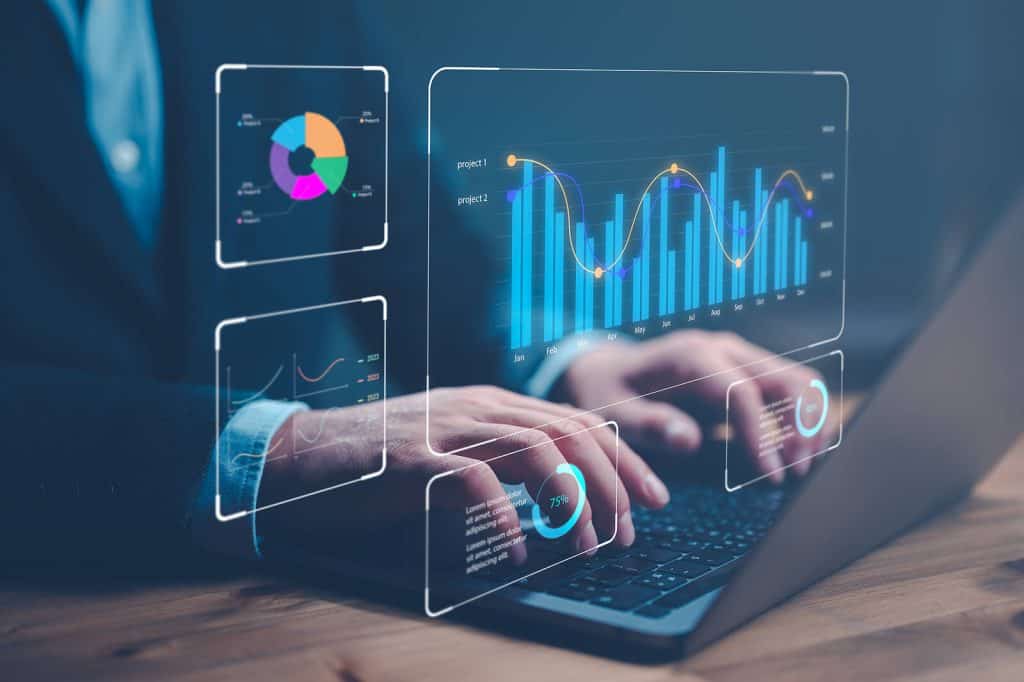The world has become tech-based. The sentence is now quite common. What’s new is the growing popularity of big data and analytics. Every day quintillion bytes of data are created every day.
Table of Contents
ToggleData analysts are becoming quite popular due to the above reason. “Data is the new oil of the 21st Century.” It is an exciting time for HR leaders. They can make important decisions related to recruitment, retention, etc., with the help of big data.
Data-driven HR transforms how HR teams coordinate with the people in their organizations. Technology is changing fast, so the way HR teams work now would be different again.
What do you Understand by People Analytics?
For those who are unaware, People Analytics (also known as HR analytics) is the use of data by HR managers to learn and make decisions about their employees. It includes the use of statistics, mathematics, and technology.
Organizations can use analytics to manage and improve employee engagement. With the help of data-driven decisions, companies can expect a better return on their investment.
How Do People Analytics Help Shape Businesses?
People Analytics not only gives a competitive advantage but also provides multiple benefits.
- Better Decision Making
By analyzing and reporting on patterns in employee data like performance metrics, retention, engagement, and companies could make wise decisions regarding talent acquisition and organizational growth. This leads companies to better strategy-making, resource allocation, and overall business growth.
- Improved Employee Engagement and Productivity
Organizations could understand the factors which drive employee engagement and productivity. Companies can identify and take necessary measures to accelerate engagement by scrutinizing data on employee satisfaction, work ways, and team functions.
- Hiring and Retaining Employees
Data can help talent acquisition teams to make informed decisions on the selection process, finding the right candidate that fits the job role and culture of the company.
Potential risks can be identified to reduce retention rates, and proactive measures could be taken in advance.
- Promoting Diversity and Inclusion.
Diversity in an organization is an important aspect as it shows an inclusive environment. Companies can study the data of demographics, surveys, and performance metrics, to identify potential biases in talent acquisition, performance evaluation, and promotion.
- Effective Cost Management and Operations
All the above points mentioned result in saving money for the company. HR can find the root cause of inefficiencies and intervene at the appropriate time. Furthermore, analyzing data on employee workload could assist in optimizing resource allocation.
Future Trends of People Analytics in the Next Decade
HR Analytics has become an important tool for organizations to manage their human resources. As time progresses to the next decade, we can see more technological improvements than we had imagined. But there are some points which would happen.
- Greater Importance to Privacy
Analytics solutions that can collect data without compromising employees’ privacy will play a critical role in establishing trust. The importance of privacy is expanding all over the globe. Countries are tightening rules on laws regarding data protection to ensure citizens’ privacy.
Businesses should ensure only reliable people have access to specific personal data. The task becomes more challenging as different countries have their laws and regulations. It is a crucial responsibility of organizations to uphold privacy.
- Predictive Analytics Taking the Lead
Analytics is just not about numbers. It’s also about a perspective on how, what, and when to decide and proceed. Predictive analytics could be essential in building a well-calibrated and focused pipeline where traditional HR practices are taken into account.
It will aid in the timely evaluation of quality hires in terms of cultural fit, productivity, output, and future leadership potential. Hiring large numbers is meaningless if they don’t match with quality and anticipated results.
- AI will Power HR Analytics
AI Integration will be the foundation of the future workplace. AI-enabled technologies could be useful to measure employee exit patterns, future leaving employees, etc. AI would also help in cost-cutting by automating various repetitive tasks. Henceforth, HRs would be able to focus more on making strategic decisions.
- Personalized Employee Experience
By 2035, hr analytics will be developed to offer personalized experiences for employees. Advanced algorithms would be able to leverage vast amounts of data to understand individual choices, strong points, and interests. The data would assist organizations in nurturing career paths, learning lessons, and work environments to meet employees’ unique needs.
- Workforce Planning Would be Predictive
Predictive Analytics will be at the center of workforce planning by 2035. With the help of AI, organizations can analyze historical and real-time data and identify talent demands and potential skill gaps. External factors such as market trends, technological improvements, etc., would be considered for providing actionable insights.
Final Thoughts
People Analytics would be promising for organizations for businesses to unleash the full potential of their human capital. Personalization, workforce planning, AI-powered analytics, and privacy-enabled HR Software Development will be the key pillars framing the transformative landscape.
No matter how technology gets evolves, ultimately, people will remain a central part of it. Technology will be able to automate most of the tasks. However, the strategic decisions will need human intervention. Humans are social beings; we need to empathize with each other. The future lies in its ability to input data with a human-centric approach, creating a surrounding where employees thrive, contribute, and find satisfaction.
FAQ
A: People analytics uses data and analysis to gain insights into human behaviour, preferences, and organizational performance. In the future, it will play a crucial role in making data-driven decisions about workforce management, talent acquisition, employee engagement, and organizational development.
A: Advancements in technology, such as artificial intelligence (AI), machine learning, and big data analytics, will significantly impact the field of people analytics. These technologies will enable organizations to collect and analyze vast amounts of employee data, leading to more accurate predictions, improved talent management, and enhanced decision-making processes.
A: Ethical considerations will become increasingly important as people analytics becomes more sophisticated. It will be crucial to balance the benefits of data-driven insights with protecting employee privacy and ensuring the fair and unbiased use of data. Organizations will need to establish clear guidelines and protocols to ensure ethical practices in the collection, analysis, and application of people analytics.
A: In the future, HR professionals will become more data-savvy and play a critical role in leveraging people analytics to drive strategic decisions. They must develop data analysis, interpretation, and data-driven storytelling skills to communicate insights to stakeholders effectively. HR professionals must also adapt to technological advancements and proficiently utilize analytics tools and platforms.
A: By embracing people analytics in 2035, organizations can expect numerous benefits. These include improved talent acquisition and retention strategies, enhanced employee engagement and performance, optimized workforce planning, reduce bias in decision-making, and the ability to identify and address potential issues proactively. Ultimately, people analytics will help organizations make more informed decisions and create a positive and productive work environment.





